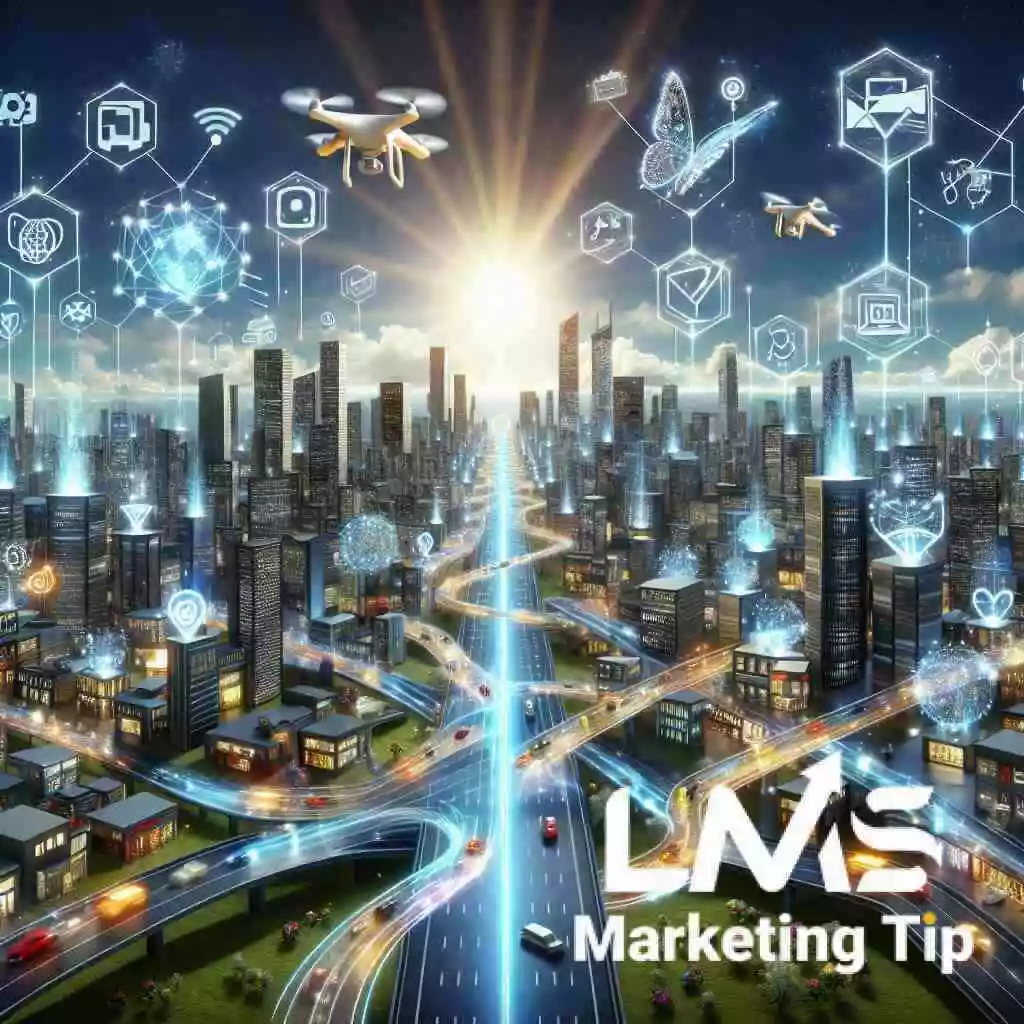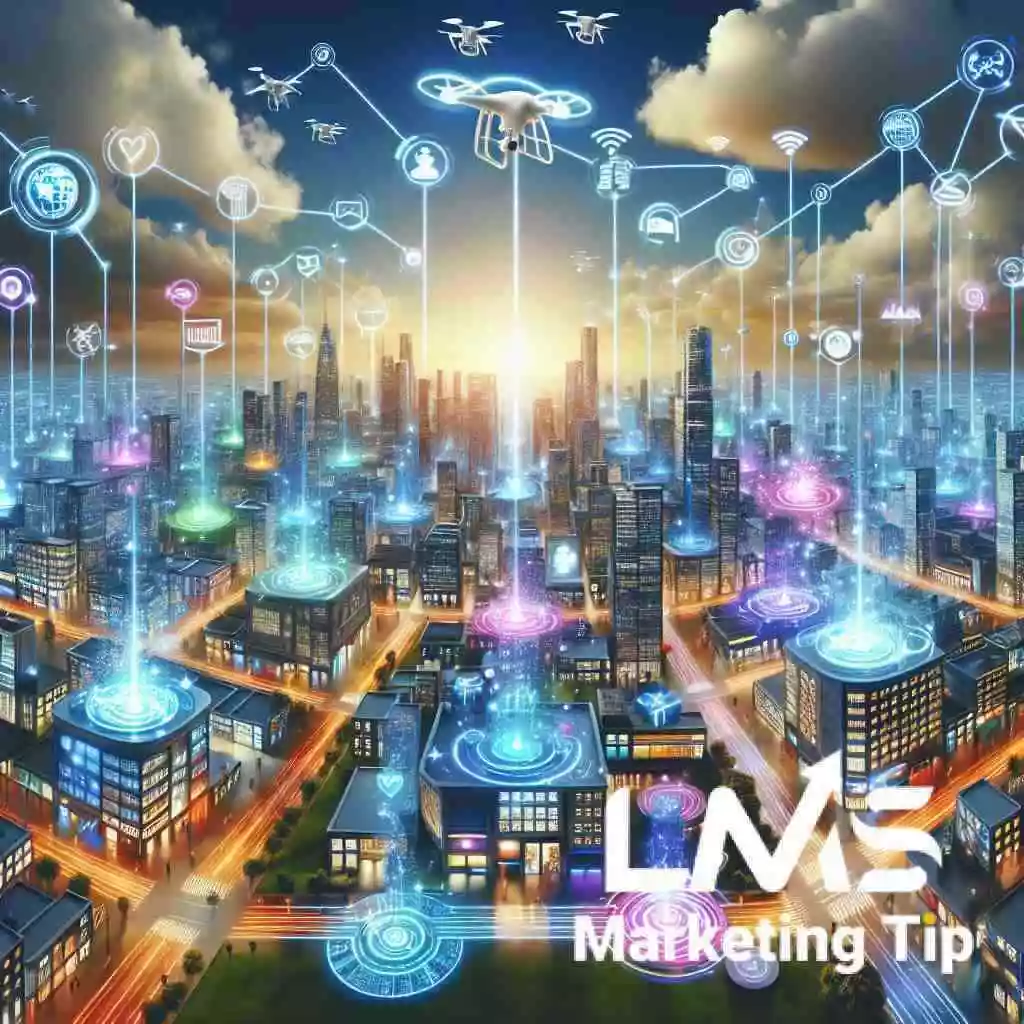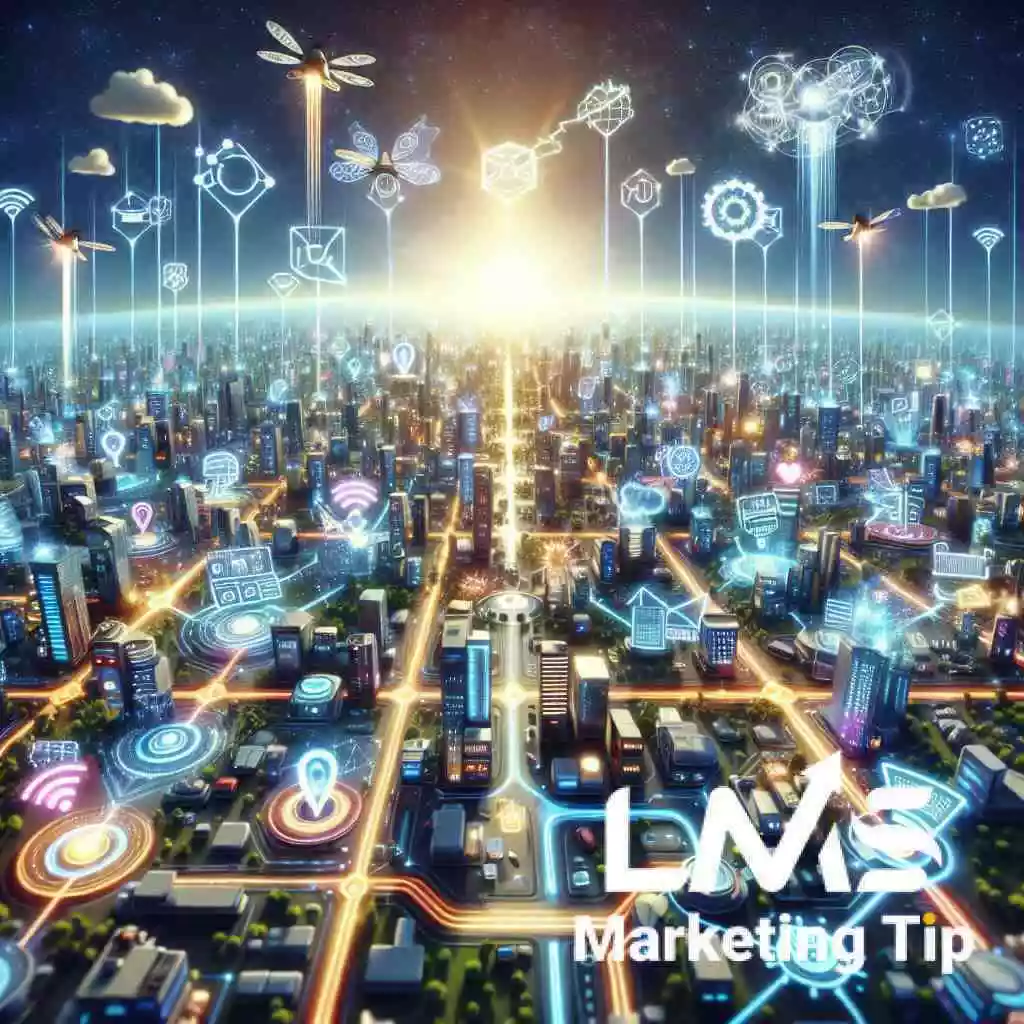
Introduction to E-commerce Content Marketing Mastery
The Evolution of E-commerce Marketing
The landscape of e-commerce marketing has undergone profound transformations over the years, evolving from simple product listings to highly sophisticated digital experiences that cater to ever-changing consumer behaviors. Technological advancements, changes in consumer expectations, and the relentless pace of innovation in digital marketing practices have driven this evolution. As we approach 2024, understanding the historical context of these changes becomes crucial for marketers aiming to stay ahead in the competitive digital marketplace. The journey from traditional advertising to the integration of SEO, social media marketing, and personalized content strategies exemplifies how e-commerce businesses have adapted to enhance brand visibility and drive consumer engagement.
Why Content is King in the Digital Marketplace
In today’s digital age, content reigns supreme. It’s the cornerstone of e-commerce marketing, enabling brands to communicate their unique value proposition, educate their target audience, and build lasting relationships with customers. High-quality, relevant content can significantly impact a brand’s online visibility, affecting its ranking on search engines and its presence on social media platforms. Moreover, content marketing offers a cost-effective way to increase brand awareness, generate leads, and foster customer loyalty. As we look towards 2024, the emphasis on content as a pivotal element of digital marketing strategies continues to grow, highlighting the need for brands to create compelling, engaging, and informative content that resonates with their target audience.
Setting the Stage for 2024’s Top Content Marketing Strategies
As we stand on the cusp of 2024, it’s evident that the e-commerce landscape is set for further disruptions and innovations. The focus now shifts to leveraging advanced technologies, understanding emerging consumer trends, and crafting content marketing strategies that not only attract but retain customers. Forward-thinking brands are already exploring new avenues to enhance their content marketing efforts, including the use of AI-generated content, the adoption of immersive technologies like AR and VR for storytelling, and the integration of personalized marketing approaches to create bespoke customer experiences. Initiatives to interlink e-commerce content strategies with technological advancements and consumer insights are setting the stage for a new era of e-commerce marketing mastery, promising unmatched opportunities for growth and engagement in the digital marketplace of 2024.
1 – Crafting Engaging Product Descriptions
Understanding the Power of Words in eCommerce SEO Strategies
Product descriptions play a pivotal role in e-commerce SEO strategies. When well-crafted, they not only attract potential customers but also significantly improve a website’s visibility on search engines. Engaging product descriptions provide the perfect opportunity to incorporate relevant keywords seamlessly, bridging the gap between what your target audience is searching for and the solutions your products offer. In essence, these descriptions are not just narratives about your products but powerful tools that can enhance your SEO efforts, making your products more discoverable and appealing to both search engines and consumers.
Tips for Writing Descriptions that Sell
Crafting product descriptions that sell requires a blend of creativity, strategic SEO, and a deep understanding of your target audience’s needs and pain points. Start with a clear, concise structure that highlights the benefits of the product in the opening lines. Use bullet points for technical specifications or additional perks to make the information easily digestible. Always focus on how the product solves a problem or improves the customer’s life, which is more compelling than merely listing features. Incorporate sensory words that evoke images, feelings, or experiences related to the product, making it more tangible to the shopper. Finally, remember to include a clear, persuasive call-to-action (CTA) that encourages the reader to take the next step, whether that’s making a purchase, learning more, or contacting your team for further details.
Leveraging Emotional Triggers and SEO Keywords for Better Visibility
Leveraging emotional triggers in product descriptions can significantly enhance their effectiveness. By understanding the emotional journey your customers go through when making a purchase decision, you can tailor your descriptions to resonate with them on a deeper level. This strategy includes using language that echoes their desires, aspirations, or fears and showing how your product fits into their personal story or solves their unique problems.
Incorporating SEO keywords naturally within this emotionally charged narrative improves visibility without sacrificing engagement. Keywords should not disrupt the flow but rather complement the story you’re telling about the product. Conduct thorough keyword research to identify terms your target audience uses when searching for products online, and integrate these into your descriptions in a way that feels organic and adds value to the reader. This dual focus on emotional engagement and SEO optimization is critical to creating product descriptions that not only rank well on search engines but also compel users to take action, driving both traffic and conversions for your e-commerce site.
2 – Leveraging Visual Content to Boost Sales
The Role of High-Quality Images and Videos in Conversion
In the digital era, where the average consumer’s attention span is shorter than ever, visual content has emerged as a critical element in capturing and maintaining interest. High-quality images and videos play a significant role in the conversion process for e-commerce websites. Visuals provide immediate, accessible information about a product, allowing consumers to make quick, informed decisions. They also enhance the overall aesthetic appeal of a website, improving user experience and encouraging visitors to explore further. Incorporating visual content marketing for e-commerce strategies, such as 360-degree product views or video tutorials, can significantly increase the likelihood of conversion by offering a more immersive shopping experience. Moreover, visuals can be optimized for SEO, further expanding a product’s visibility on search engines and driving traffic to the site.
Innovative Visual Content Marketing Ideas
To stand out in a crowded market, e-commerce brands need to employ innovative visual content marketing strategies. Interactive content, such as virtual try-ons or augmented reality (AR) experiences, can bridge the gap between online shopping and the tactile satisfaction of in-store purchases. Implementing these forward-thinking approaches not only captivates potential customers but also fosters a deeper connection with the product. Additionally, creating shoppable videos where viewers can click on items they like and be directed to the purchase page offers a seamless shopping experience directly from content engagement. Tailoring visual content to tell a story or convey a lifestyle that aligns with your target audience’s values can create an emotional resonance, encouraging brand loyalty and repeat business.
Utilizing User-Generated Content for Authenticity
In today’s marketplace, authenticity is critical to building trust and loyalty among customers. User-generated content (UGC), such as customer reviews, photos, and videos, offers a wealth of authentic, relatable experiences that prospective buyers can reference. Encouraging customers to share their visual content on social media platforms or your website not only provides free promotional material but also showcases real-life applications of your products. UGC can boost credibility and foster a sense of community around your brand. Implementing strategies to showcase user-generated content in e-commerce platforms, such as featuring customer photos on product pages or creating social media campaigns around user submissions, can effectively enhance engagement and increase conversion rates by offering authentic perspectives.
3 – Utilizing Social Media Platforms for Maximum Reach
Choosing the Right Platforms for Your Audience
In the ever-evolving realm of e-commerce, the power of social media is undeniable. To effectively leverage this, brands must start by identifying the platforms where their target audience spends the most time. It’s not just about being everywhere; it’s about being where your audience is. Whether it’s Instagram, Facebook, Twitter, or newer platforms like TikTok, each has its own set of demographics. Tailoring your marketing efforts to the platforms that align with your audience’s preferences ensures that your message resonates and engages. Marketing Tip, a seasoned marketing agency, underscores the importance of deep audience analysis as a cornerstone for crafting compelling social media marketing strategies for e-commerce. By understanding your audience’s behaviors, preferences, and habits on social media, you can create content that speaks directly to them, thereby enhancing engagement and brand loyalty.
Integrating eCommerce with Social Media Shopping Features
The fusion of e-commerce and social media has revolutionized the way we shop, offering businesses unprecedented opportunities to reach potential customers. Platforms such as Instagram and Facebook have evolved to include shopping features, allowing users to make purchases without ever leaving the app. This integration not only simplifies the shopping experience for the consumer but also opens up a direct sales channel for brands. Leveraging these social media shopping features requires a nuanced approach, blending creativity with marketing savvy. High-quality visuals, engaging descriptions, and an easy checkout process are essential components. Furthermore, incorporating social media marketing strategies for e-commerce, including targeted advertising and influencer partnerships, can significantly boost your online presence and drive sales. Implementing these strategies effectively enables businesses to create a seamless shopping experience that can attract a wider audience and increase conversion rates.
Successful Campaigns: Case Studies on Engaging Social Media Content
Analyzing successful social media campaigns provides invaluable insights into what makes content genuinely engaging. Case studies from leading brands reveal a common theme: the integration of authenticity, interactive elements, and tailored messaging to spark interest and encourage sharing. For instance, a campaign that utilizes user-generated content encourages participation and fosters a sense of community among customers. By highlighting real stories and reviews, brands can increase credibility and relatability. Another effective strategy is leveraging influencer strategies for e-commerce. Influencers can create personalized content that resonates with their followers, providing a human touch to brand promotions. These campaigns demonstrate that when social media content strikes the right balance between being informative, relatable, and entertaining, it can significantly enhance brand visibility, drive engagement, and, ultimately, contribute to a brand’s bottom line.
4 – Personalizing Marketing Strategies for Increased Engagement
Implementing Personalized Email Marketing Campaigns
The effectiveness of email marketing in the e-commerce sector hinges on personalization. Gone are the days of one-size-fits-all email blasts. Today, email campaigns for e-commerce are heavily dependent on segmenting audiences based on their preferences, purchase history, and behavior. By crafting personalized email messages that cater to the individual needs and interests of each subscriber, brands can significantly increase their open rates, click-through rates, and, ultimately, conversions. Tools that automate the process of personalization, such as CRM systems, have become indispensable. They enable marketers to create more relevant, engaging content that speaks directly to the recipient, making them feel valued and understood, thereby fostering more robust customer relationships.
Using Data Analytics to Tailor Content
Unlocking the full potential of personalized content marketing also requires a deep dive into data analytics. By collecting and analyzing data on customer interactions and behaviors across various touchpoints, brands can gain insights into what content resonates best with their audience. This data-driven approach allows for analytics in content marketing to not only identify trends but also to predict future consumer behavior. With these insights, marketers can tailor their content strategies to meet the specific needs and preferences of their target audience. Whether it’s blog posts, social media updates, or product recommendations, utilizing analytics ensures that every piece of content delivered is both relevant and engaging, leading to increased engagement and loyalty.
Enhancing Customer Experience with Personalization
The ultimate goal of personalizing marketing strategies is to enhance the overall customer experience. Personalization goes beyond just addressing the customer by their first name; it encompasses understanding and anticipating their needs at every stage of the customer journey. This could mean personalized product recommendations on a website, tailored offers, and promotions, or dynamic content in emails that changes based on the customer’s past behavior. By leveraging personalized advertising methods for e-commerce, brands can create a more engaging and seamless experience that not only meets but exceeds customer expectations. This, in turn, can lead to increased customer satisfaction, higher retention rates, and more effective cross-selling and up-selling opportunities. In the fast-paced world of e-commerce, personalization is not just a nice-to-have; it’s a must for any brand looking to stay relevant and competitive.
5 – Harnessing the Power of Influencer Marketing
Identifying the Right Influencers for Your Brand
In an age where consumers are inundated with content, influencer marketing has emerged as a critical strategy for e-commerce brands looking to cut through the noise. The first step in harnessing this power is identifying the right influencers who resonate with your brand and target audience. This means going beyond basic demographic matches to understand the influencers’ values, content style, and engagement rates. Marketing Tip, as a leading digital marketing agency, recommends leveraging social listening tools and platforms that offer insights into influencers’ performance metrics and audience alignment. By carefully selecting influencers whose brand and audience align with yours, you can ensure that your marketing messages are delivered in a way that feels both authentic and engaging.
Building Mutually Beneficial Partnerships
Once the right influencers have been identified, the next step is to build mutually beneficial partnerships. This requires a clear understanding of what both parties stand to gain from the collaboration. For brands, this often means access to the influencer’s audience and the credibility that comes with their endorsement. For influencers, it involves not just financial compensation but usually opportunities for content enrichment and audience growth. Successful partnerships are based on transparency, shared goals, and open communication. Crafting a detailed agreement that outlines expectations, deliverables, and metrics for success is crucial. Brands should also provide influencers with the freedom to create content that feels genuine to their style while still aligning with the brand’s messaging and objectives. This balance is essential for creating content that resonates with the audience and achieves the desired marketing outcomes.
Tracking ROI from Influencer Campaigns
The final piece of the influencer marketing puzzle is tracking the return on investment (ROI) from your campaigns. In the digital marketing space, where data is plentiful, measuring the effectiveness of influencer partnerships is critical for understanding their impact on your brand’s performance. Key metrics to consider include engagement rates, traffic to your site, conversion rates, and overall sales attributed to the campaign. Marketing Tip points out that utilizing advanced analytics tools can provide deeper insights into campaign performance and the influencer’s direct impact on your business. Additionally, it’s essential to set clear KPIs at the outset of the campaign, which could range from brand awareness metrics like social media impressions and follower growth to direct sales performance. Regular reviews and adjustments based on these analytics will help optimize the influencer strategy for better results over time, ensuring that every dollar spent contributes to measurable outcomes for your e-commerce business.
6 – Email Marketing Optimization for eCommerce
Crafting Compelling Email Content
Email marketing remains a cornerstone technique within a broader digital marketing strategy, especially for e-commerce businesses aiming to hold a direct line of communication with their customers. Crafting compelling email content is pivotal to capturing attention in a cluttered inbox. It’s not just about promoting products or services but also about telling a story that connects with the recipients on a personal level. To achieve this, the content should be concise, targeted, and enriched with a blend of visuals and text that aligns with your brand’s voice. Incorporating personalization elements such as the recipient’s name or past purchases can significantly increase engagement rates. Furthermore, every email should provide value to the reader, whether through exclusive offers, insightful information about the products, or updates that resonate with their interests. Through NYC Retail Email Marketing, it’s more apparent than ever how localized content can also amplify the relevance and effectiveness of email campaigns, especially for businesses targeting specific regions or communities.
Segmenting Your Audience for Better Results
The power of email marketing is magnified when messages are precisely tailored to various segments of your audience. Segmenting your email list allows for targeted communication based on factors like purchase history, geographical location, and engagement level with previous emails. This level of personalization ensures that your messages are more relevant and, therefore, more likely to be opened and acted upon. Effective segmentation goes beyond mere personalization; it’s about understanding the nuances of your audience’s behavior and preferences. By analyzing data collected through interactions with your website and past email campaigns, e-commerce companies can craft messages that speak directly to the wants and needs of different customer segments. Implementing a robust CRM system can facilitate this process, enabling marketers to dynamically segment audiences and automate personalized email campaigns that drive conversions and foster a deeper connection with the brand.
A/B Testing and Analyzing Email Campaign Performance
A/B testing, also known as split testing, is an essential strategy for optimizing email marketing campaigns. By comparing two versions of an email, marketers can determine which elements, such as the subject line, call-to-action, design, or content length, resonate best with the audience. This systematic approach allows for continuous improvements based on empirical data rather than assumptions. Furthermore, analyzing the performance of email campaigns is crucial for understanding ROI and the overall effectiveness of your email marketing strategy. Key metrics to monitor include open rates, click-through rates, conversion rates, and unsubscribe rates. Leveraging advanced analytics tools can provide deeper insights into customer behavior, enabling marketers to refine their strategies over time. Additionally, integrating feedback mechanisms within emails can also offer direct insights from recipients, further guiding content and design optimizations. Through iterative testing and analysis, e-commerce businesses can enhance the efficacy of their email marketing efforts, ensuring they deliver measurable results and contribute significantly to the brand’s success.
7 – Integrating AI into Your Content Marketing Strategy
Exploring AI Tools for Content Creation and Curation
The integration of Artificial Intelligence (AI) into content marketing strategies represents a paradigm shift in how e-commerce brands approach content creation and curation. As we step into 2024, the utilization of AI tools is no longer an innovative experiment but a necessity for brands striving to maintain a competitive edge. AI tools, ranging from content generation software to automated curation platforms, empower marketers to produce high-quality, relevant content at a scale previously unimaginable. This technology enables the analysis of large datasets to identify trends, preferences, and behaviors, guiding the creation of content that resonates deeply with the target audience. For instance, AI-driven content optimization tools tailor messaging and recommendations based on individual user interactions, ensuring every piece of content delivered is both pertinent and engaging. By automating routine tasks, AI allows marketers to focus on strategic planning and creative aspects of content marketing, leading to more effective and efficient campaigns.
Personalizing Customer Journies with AI
In the current digital landscape, personalization is critical to captivating and retaining customers. AI technologies play a pivotal role in personalizing customer journeys by harnessing data to deliver unique, individualized experiences across various touchpoints. AI algorithms analyze customers’ browsing patterns, purchase history, and interactions to predict future needs and preferences. This level of insight enables e-commerce brands to craft personalized recommendations, tailor email marketing campaigns, and dynamically adjust content displayed on websites or social media platforms. Thus enhancing the customer journey from initial awareness to purchase and beyond. Adopting AI in content marketing not only boosts customer engagement but also significantly increases conversion rates by delivering the right message to the right person at the right time. As brands continue to leverage AI for personalization, we can expect to see a surge in customer loyalty and lifetime value.
The Future of AI in Digital Marketing
Looking ahead, the future of AI in digital marketing is both exciting and transformative. Advancements in AI technologies, such as natural language processing (NLP), machine learning, and predictive analytics, are poised to redefine how e-commerce businesses engage with their audiences. We are on the brink of seeing AI tools that can generate not only written content but also images, videos, and interactive experiences tailored to individual user preferences. Moreover, AI’s integration into digital advertising insights furthers the effectiveness of marketing campaigns by optimizing ad placements and personalizing ad content in real time. As AI continues to evolve, its capabilities in understanding and predicting customer behavior will undoubtedly lead to more sophisticated and nuanced marketing strategies. The potential for AI to automate complex decision-making processes while continually learning and improving suggests a future where digital marketing is more personalized, efficient, and impactful than ever before. Exploring these opportunities will be crucial for brands aiming to remain relevant and competitive in a rapidly changing e-commerce landscape.
8 – Creating Seamless Omni-channel Marketing Experiences
Understanding the Omni-channel Approach
The omnichannel approach represents a holistic strategy that provides customers with a seamless shopping experience, whether they are online from a mobile device, a laptop, or in a physical store. As we move into 2024, the importance of implementing an omnichannel marketing strategy for e-commerce cannot be overstated. This approach involves integrating multiple marketing platforms to engage with customers in a unified manner across all touchpoints. By doing so, brands can ensure a consistent and cohesive brand message, enhancing the customer journey at every stage. The omnichannel content marketing approach leverages data and analytics to understand customer behavior across channels, enabling personalized interactions that drive engagement and loyalty. This not only improves customer experience but also boosts conversion rates by providing relevant, timely, and context-aware content that resonates with the audience.
Coordinating Content Across All User Touchpoints
Coordinating content across all user touchpoints is central to achieving an effective omnichannel marketing strategy. This coordination ensures that the brand’s message is consistent, whether the customer is interacting with an email campaign, browsing the brand’s website, or engaging on social media platforms. Central to this is responsive web development, which ensures that content adapts smoothly to different screen sizes and devices, offering a seamless user experience. Additionally, integrating backend systems like inventory management and CRM databases is crucial for providing real-time updates and personalized content across channels. By ensuring that all platforms communicate with each other efficiently, brands can deliver a cohesive narrative that complements the customer’s journey, regardless of the channel they choose to engage with.
Case Studies: Success Stories of Omni-channel Content Marketing
Several brands have demonstrated the profound impact of successfully implementing an omnichannel content marketing strategy. One notable example is a global retail giant that integrated its online and offline channels to offer a “buy online, pick up in-store” option. This strategy not only increased online sales but also drove additional foot traffic to physical stores. Another success story comes from a niche e-commerce brand that leveraged data from its social media platforms to personalize email marketing campaigns, resulting in a significant uptick in engagement and conversion rates. These case studies highlight the power of a well-coordinated omnichannel strategy that puts the customer’s experience at the forefront. By leveraging data-driven insights and integrating marketing efforts across all touchpoints, brands can create compelling, personalized journeys that not only meet but exceed customer expectations, driving loyalty and growth in the competitive e-commerce landscape.
9 – Optimizing for Voice Search and Mobile Devices
Adapting Content for Voice Search Queries
Voice search optimization is now a pivotal component of e-commerce content marketing strategies as more consumers lean into the convenience of voice-activated assistants like Alexa, Siri, and Google Assistant. To adapt content for voice search queries, businesses must focus on natural language processing and question-based phrasing consistent with verbal inquiries. This means shifting SEO tactics towards long-tail keywords and conversational phrases that mirror how people talk in everyday life. Crafting content that answers common questions related to your products or services can significantly enhance visibility in voice search results. Furthermore, including local SEO strategies is crucial for e-commerce businesses looking to attract customers in specific regions or localities, thereby providing an opportunity to be featured in “near me” voice searches, which have seen a dramatic increase in popularity. Incorporating content optimizations for voice searches is not just about staying abreast of technological advancements but about aligning with evolving user preferences and behaviors.
Mobile Optimization Best Practices
As the proliferation of smartphones continues, mobile optimization has become non-negotiable for e-commerce websites. Best practices for mobile optimization include implementing responsive design, which ensures that your website automatically adjusts to fit the screen of any device, from desktops to smartphones. This not only improves the user experience but also contributes positively to SEO rankings, as search engines favor mobile-friendly sites. Speed is another critical factor; a fast-loading site retains users’ attention and reduces bounce rate, which is crucial for maintaining high conversion rates. Moreover, streamlined navigation tailored for thumb-scrolling and easy-to-tap buttons facilitates smoother user journeys on mobile devices. Touchpoints like clear and accessible call-to-action buttons and simplified checkout processes are essential in converting mobile users into customers. Investing in mobile optimization aligns with providing a seamless shopping experience, reflecting the brand’s commitment to catering to its audience’s preferences and habits.
Staying Ahead in the Mobile-first World
Adapting to the mobile-first world means acknowledging that the majority of consumers now access the internet primarily through mobile devices. For e-commerce businesses, staying ahead in this landscape involves continually evaluating and enhancing mobile user experiences. This might include leveraging the latest technology in app development, integrating mobile payment options like Apple Pay or Google Wallet to streamline the purchasing process, and implementing augmented reality (AR) to offer immersive product visualizations. Also, keeping abreast of changes in mobile search algorithms and adapting content and SEO strategies accordingly is vital for maintaining a competitive edge. Engaging with customers through mobile-specific channels, such as SMS marketing and mobile apps, allows for personalized and timely interactions that can drive sales and foster loyalty. By embracing a mobile-first approach, e-commerce businesses can not only meet but exceed customer expectations, securing their position in a rapidly evolving digital marketplace.
10 – Measuring and Analyzing Content Marketing ROI
Setting Key Performance Indicators
To effectively measure and analyze the ROI of your content marketing efforts, establishing clear, quantifiable Key Performance Indicators (KPIs) is essential. These metrics should align with your overarching business objectives, whether it’s increasing brand awareness, generating leads, enhancing engagement, or driving sales. For instance, KPIs could include website traffic, conversion rates, social media engagement metrics, and email marketing performance statistics. Remember, the KPIs should be specific, measurable, achievable, relevant, and time-bound (SMART) to provide meaningful insights that can inform your marketing strategy. By carefully setting Key Performance Indicators, you create a foundation for measuring the success of your content marketing efforts and aligning them with the broader goals of your organization.
Utilizing Analytics Tools for Content Performance
In today’s data-driven marketing environment, leveraging analytics tools is crucial for assessing the performance of your content marketing strategy. These tools enable you to track and analyze user behavior, engagement levels, and conversion metrics across different channels and content types. Popular analytics platforms offer a wealth of data, from page views and bounce rates to click-through rates and social shares, providing a comprehensive view of your content’s impact. More sophisticated systems can even track the customer journey, offering insights into how different pieces of content contribute to conversions and sales. Regularly reviewing this data allows you to identify what content resonates with your audience, informing future content creation and distribution strategies to maximize ROI. Incorporating analytics into your routine ensures a constant stream of actionable insights, driving continuous improvement in your content marketing endeavors.
Adjusting Strategies Based on Data Insights
The true power of content marketing lies in its ability to evolve based on actionable data insights. By analyzing the performance of your content against established KPIs, you can identify areas for optimization and adjust your strategies accordingly. This might involve refining your content topics, formats, or distribution channels to meet the needs of your target audience better. It could also mean reallocating resources to the most effective tactics, such as increasing investment in high-performing social platforms or improving SEO for underperforming content. Additionally, feedback loops are essential, enabling you to test different approaches and measure their impact. By being responsive to data, you ensure that your content marketing strategy remains dynamic, flexible, and aligned with your audience’s preferences and behaviors. This adaptability not only helps you achieve better returns on your content marketing investments but also helps you stay ahead of market trends and consumer demands.
Crafting a Futuristic Content Strategy for 2024
Incorporating Emerging Trends in eCommerce Content
As the digital landscape constantly evolves, staying ahead requires a keen eye on emerging trends in eCommerce content. In 2024, leveraging these trends will be crucial for brands looking to differentiate themselves and capture the attention of their target audience. One significant trend is the rise of interactive content, such as quizzes, polls, and augmented reality (AR) experiences, which not only engage customers in a novel way but also provide valuable data on customer preferences and behaviors. Additionally, the increasing use of video content, from product demonstrations to behind-the-scenes insights, caters to consumers’ preferences for dynamic and digestible content formats.
Incorporating user-generated content (UGC) into marketing strategies for Long Island businesses and beyond creates authentic connections with local audiences, enhancing brand trust. Furthermore, the integration of social media marketing strategies for e-commerce enables brands to reach customers across multiple platforms with cohesive and engaging narratives. By staying attuned to these trends, eCommerce entities can develop content strategies that are not only current but also forward-thinking, positioning them well within the competitive digital marketplace.
Building a Flexible and Resilient Marketing Plan
Flexibility and resilience are the cornerstones of any successful marketing plan, especially in the fast-paced world of e-commerce. As we look toward 2024, these attributes become even more critical. A flexible marketing plan allows businesses to adapt quickly to market changes, consumer behavior shifts, or technological advancements. This agility is essential for taking advantage of unexpected opportunities or mitigating challenges that arise.
Building such a plan involves establishing a solid yet adaptable foundation, setting clear but flexible goals, and leveraging data analytics to inform decision-making. Emphasizing a culture of continuous learning and iteration within marketing teams ensures strategies remain relevant and practical. Utilizing digital tools and platforms for real-time feedback and analytics enables brands to pivot their approaches swiftly, embracing strategies like e-commerce development to cater to evolving consumer demands. By anticipating changes and preparing to adjust strategies accordingly, e-commerce businesses can maintain a competitive edge regardless of the shifting digital marketing landscape.
Forecasting the Impact of Tech Innovations on Content Marketing
The relentless pace of technological innovation continues to reshape the landscape of content marketing in the eCommerce sector. As we navigate through 2024, anticipating and adapting to these changes will be crucial for businesses aiming to stay ahead. Emerging technologies like artificial intelligence (AI) and machine learning offer unprecedented capabilities in content personalization, predictive analytics, and customer journey mapping, enabling more targeted and effective marketing strategies.
Blockchain technology is poised to enhance transparency and security in content marketing, fostering trust between brands and consumers. Similarly, advancements in virtual reality (VR) and augmented reality (AR) technologies offer new avenues for immersive storytelling, allowing brands to engage with their audience in more compelling and interactive ways. Voice search optimization becomes increasingly important as smart devices proliferate, requiring content to be optimized for natural language queries.
Understanding these tech innovations and their potential impact on content marketing strategies is essential. By staying informed and agile, e-commerce brands can leverage these technologies to deliver highly personalized, engaging, and secure content experiences, ensuring they remain at the forefront of the digital marketing revolution as we move deeper into 202ons future.
Conclusion: Elevating Your eCommerce Game
Recap: Key Takeaways for E-commerce Success
As we navigate the diverse and complex terrain of e-commerce, the strategic importance of content marketing in driving success cannot be overstressed. Reflecting on the top 10 content marketing tips for e-commerce in 2024, it’s clear that a multifaceted approach is required. From crafting engaging product descriptions that leverage SEO to optimizing for voice search and mobile devices, every strategy plays a crucial role in attracting, engaging, and converting your target audience.
The integration of AI into your content marketing strategy offers personalized experiences at scale while utilizing analytics tools, which enables businesses to measure performance and adjust strategies dynamically. Innovations in visual content marketing and the effective use of social media platforms further amplify your brand’s reach and resonance. Significantly, personalizing marketing strategies not only enhances customer engagement but also fosters long-term loyalty.
The Road Ahead: Staying Ahead of the Curve in 2024
Looking forward, staying ahead of the curve in 2024 demands vigilance, adaptability, and a proactive embrace of emerging trends and technologies. The digital marketplace is ever-evolving, propelled by advancements in technology and shifts in consumer behaviors and expectations. Staying informed on the latest digital advertising insights and understanding what Click means for your advertising strategy is critical for keeping your marketing efforts efficient and effective.
Moreover, the increasing significance of data privacy and security, alongside the rapid growth of platforms like TikTok and the potential resurgence of others, necessitates a flexible and responsive marketing strategy. Marketers must be ready to explore new platforms, experiment with new formats, and pivot their approaches to align with the digital zeitgeist.
Committing to Continuous Improvement and Innovation
The essence of achieving enduring success in e-commerce content marketing lies in a commitment to continuous improvement and innovation. This entails not just a willingness to adopt new technologies and platforms but also a dedication to refining and evolving your marketing strategies based on data-driven insights.
Investing in website design that resonates with evolving consumer expectations, like those offered by pioneering NY Web Designs, becomes a fundamental aspect of this commitment. Similarly, leveraging insights from user-generated content, customer feedback, and performance analytics enables brands to craft more engaging, relevant, and valuable content.
In conclusion, the journey to e-commerce mastery is ongoing. You can elevate your e-commerce game by focusing on your audience, embracing technological advancements, and fostering a culture of learning and innovation. Remember, the road to success is paved with insights, strategy, and the ability to adapt and evolve. In the dynamic landscape of e-commerce, those who stay informed, flexible, and forward-thinking will not only survive but thrive.
Frequently Asked Questions
Question: How can I integrate user-generated content effectively into my eCommerce content marketing strategy?
Answer: Integrating user-generated content into your eCommerce content marketing strategy involves encouraging and leveraging feedback, photos, and videos from your customers. Marketing Tip suggests starting by creating platforms or campaigns where customers can easily share their experiences, such as social media hashtags or dedicated sections on your website. Highlighting these contributions not only provides authentic promotional material but also builds trust with your target audience. Incorporating such content can enhance brand visibility on search engines and social media platforms, fostering a sense of community and increasing conversion rates by showcasing real-life product applications and customer satisfaction.
Question: What are some innovative visual content marketing ideas for my e-commerce store in 2024?
Answer: In 2024, leveraging AR and VR for immersive storytelling, creating interactive 360-degree product views, and offering virtual try-ons are innovative visual content marketing ideas that can set your e-commerce store apart. Marketing Tip emphasizes the importance of using high-quality images and videos that showcase your products in the best light. Tailoring visual content to tell a relatable story or convey a lifestyle that aligns with your target audience’s values creates an emotional connection, encouraging engagement and boosting sales. Additionally, shoppable videos and user-generated content campaigns can provide a seamless shopping experience directly from content engagement, driving both brand loyalty and repeat business.
Question: How does Marketing Tip suggest utilizing social media marketing for eCommerce to maximize reach?
Answer: Marketing Tip suggests choosing platforms where your target audience is most active and tailoring your content accordingly to maximize reach. Engaging with your audience through regular posts, stories, and interactive features like polls and quizzes can significantly enhance brand visibility. Incorporating social media shopping features, such as product tags in Instagram posts, makes it easier for users to purchase directly from the app, simplifying the customer journey. Additionally, leveraging influencer partnerships to create authentic content that resonates with potential customers can expand your reach and drive sales. Remember, consistency and authenticity are essential in social media marketing for e-commerce.
Question: In ‘Top 10 Content Marketing Tips for E-commerce 2024’, personalized marketing strategies were highlighted as crucial. How can I apply this to my email marketing campaigns for better engagement?
Answer: To apply personalized marketing strategies to your email marketing campaigns, start by segmenting your audience based on criteria like purchase history, browsing behavior, and personal preferences. Marketing Tip recommends using automation tools to tailor your emails to these segments, ensuring that the content is relevant and engaging for each recipient. Incorporating personal touches, such as addressing the recipient by name and referencing their past interactions with your brand, can significantly increase open rates. Additionally, sending targeted promotions, product recommendations, and exclusive content based on the recipient’s interests and behaviors makes your emails more compelling. Regularly analyzing your email performance and adjusting your strategy based on in-depth insights will continually enhance engagement and conversion rates.
Question: How can we leverage AI in our content marketing strategy to personalize customer journeys and improve engagement?
Answer: Leveraging AI in your content marketing strategy involves utilizing AI-driven tools to analyze customer data and predict behavior, enabling the delivery of personalized content experiences across various touchpoints. Marketing Tip suggests implementing AI technologies for content creation and curation, as well as for optimizing SEO strategies and personalizing email campaigns. By analyzing customer interactions and behaviors, AI can help tailor blog posts, social media updates, and product recommendations, ensuring that each piece of content is relevant to the individual consumer. AI’s ability to process large datasets also allows for more precise targeting and segmentation, leading to increased engagement, higher conversion rates, and a more seamless customer journey.
Question: What are the critical components for measuring and analyzing content marketing ROI in 2024?
Answer: Measuring and analyzing content marketing ROI in 2024 centers around setting clear KPIs, utilizing advanced analytics tools, and adjusting strategies based on data insights. Key components include tracking website traffic, conversion rates, social media engagement, and email marketing performance. Marketing Tip advises employing analytics platforms to gather comprehensive data on user behavior and campaign performance. Coupling quantitative metrics with qualitative feedback, such as customer surveys and comments, provides a well-rounded view of your content’s impact. Regular review and adjustment of your content strategies, based on these insights, are crucial for optimizing ROI and ensuring that your content marketing efforts contribute meaningfully to your e-commerce success.











